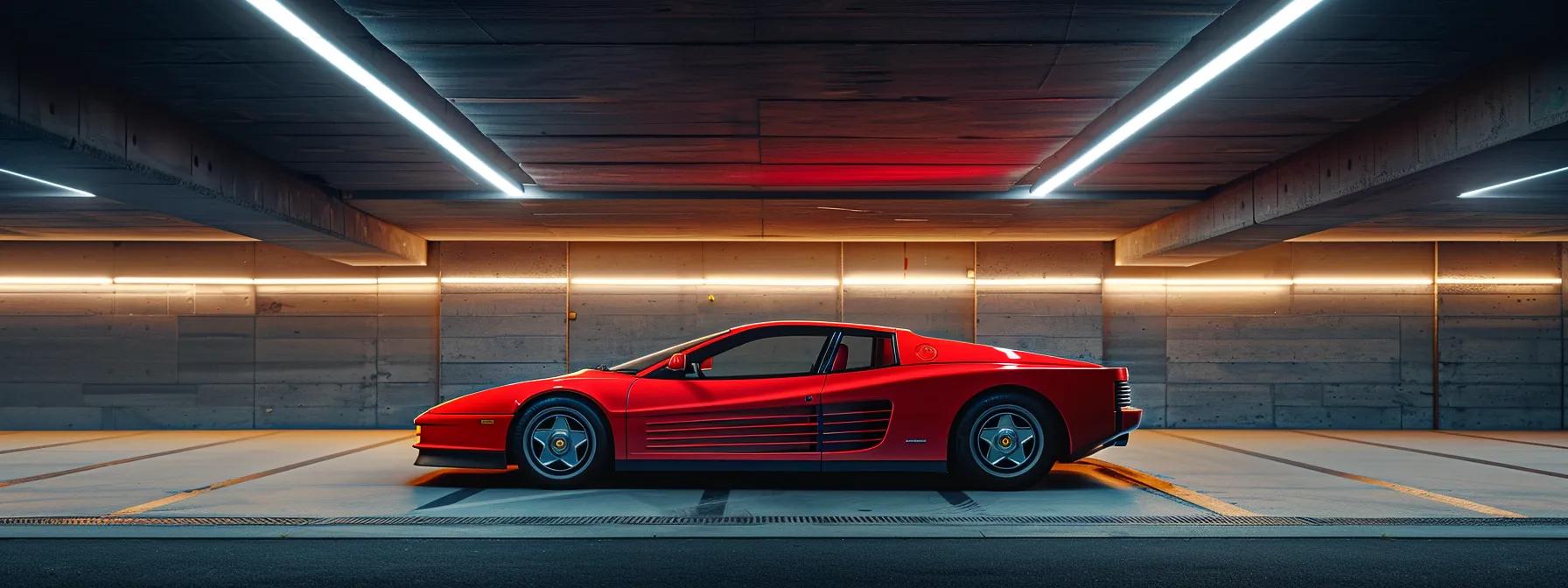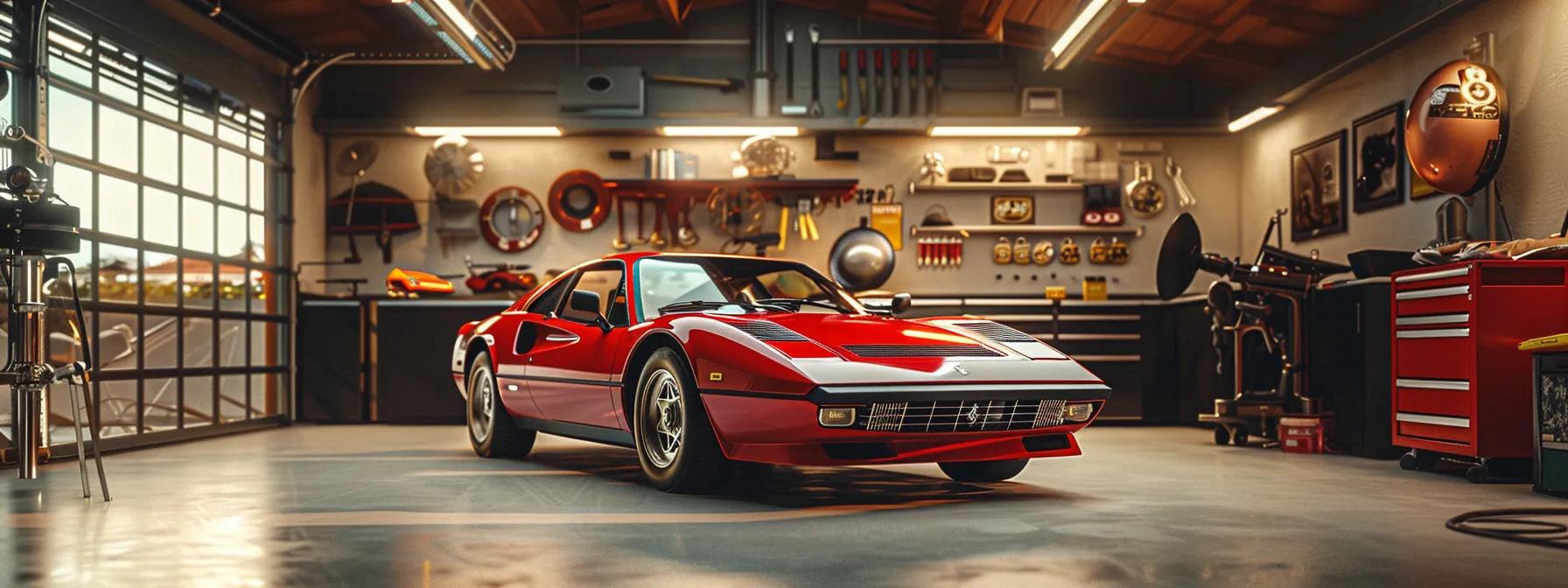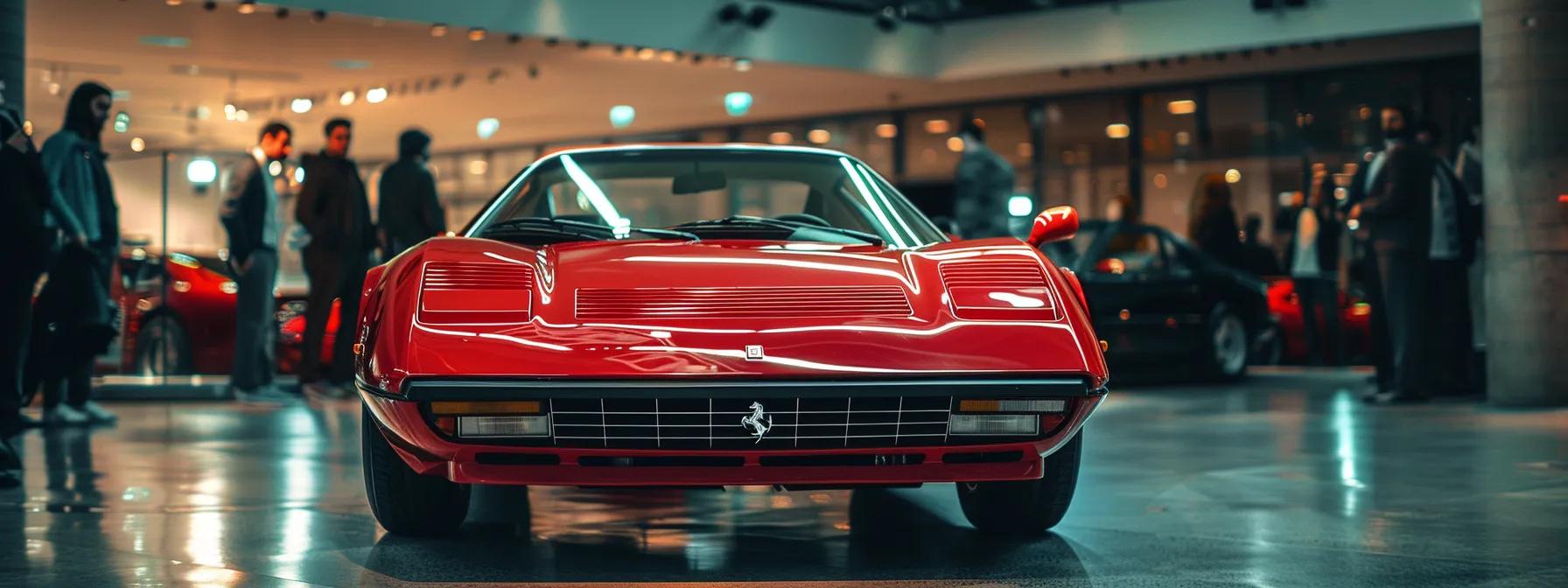Iconic 1980s Ferrari Models That Defined an Era: Complete Guide to History, Specs, and Market Value
The 1980s marked a watershed moment in automotive history as Ferrari led the creation of supercars that combined unmatched performance, cutting-edge technology, and iconic Italian design. Ferrari models of this transformative decade became symbols of speed, luxury, and engineering prowess. Celebrated for their rarity and lasting influence on sports car evolution, these vehicles continue to captivate enthusiasts and collectors. This guide examines what made 1980s Ferraris iconic and influential, highlights the defining models of the era, and offers practical advice for buying, selling, and maintaining these classic cars through trusted platforms like 1scud.com. It also discusses common maintenance challenges, restoration practices, and current market trends while introducing communities dedicated to preserving Ferrari heritage. For those who cherish these classic automobiles, it is essential to list your ferrari on platforms that connect collectors globally.
The following sections provide an authoritative resource for Ferrari collectors, buyers, and sellers by analyzing technological advances, design innovations, and market evolution that have secured the legacy of 1980s Ferraris—a decade whose impact resonates in today’s automotive world.
Transitioning to specifics, the guide is organized into clearly defined sections that explore Ferrari’s influence on sports car design, Enzo Ferrari’s key innovations, and the models that truly defined the 1980s. Expert tips on purchasing, selling, and maintaining these classic vehicles are provided, alongside insights into restoration techniques and current market trends.
What Made 1980s Ferrari Models Iconic and Influential?
The 1980s was a period of radical innovation and transformation for Ferrari. The brand refined its signature styling and integrated groundbreaking technologies that elevated performance. With aerodynamic designs and powerful V12 and V8 engines, these Ferraris set new benchmarks in speed and handling. The fusion of meticulous Italian craftsmanship with modern engineering made each model a masterpiece of art and performance—qualities that continue to define Ferrari, whether discussing the Ferrari 512, Ferrari F12, Ferrari 458, Ferrari F40, or other legendary models.
How Did Ferrari Shape Sports Car Design in the 1980s?
Ferrari’s commitment to aerodynamic efficiency drove dramatic changes in sports car design during the 1980s. Designers experimented with sleek, low-slung profiles and refined details—each curve and vent had a purpose. Techniques such as wind-tunnel testing and computational fluid dynamics reduced drag and improved downforce, establishing new industry standards. The iconic “Rosso Corsa” color, synonymous with passion and performance, reinforced Ferrari’s image and influenced the entire supercar segment.
Who Was Enzo Ferrari and What Was His Impact in the 1980s?
Enzo Ferrari’s visionary approach underpinned every model produced during the 1980s. Despite his passing in that era, his philosophy of blending race-inspired technology with luxurious design continued to inspire every new model. His insistence on precision and quality ensured that each Ferrari delivered both exhilarating performance and refined comfort. Enzo’s legacy remains a benchmark in automotive excellence and is evident in the enduring appeal of all Ferrari models from this era.
What Were the Key Technological Advances in 1980s Ferraris?
Technological breakthroughs defined Ferrari in the 1980s. The switch to fuel injection systems allowed for precise engine control and enhanced power output, while advanced manual gearboxes improved shifting performance. Improvements in aerodynamics through optimized bodywork and the use of lighter, stronger materials not only boosted speed and stability but also honored Ferrari’s racing heritage. These advancements continue to be celebrated by collectors and enthusiasts, reflecting Ferrari’s commitment to innovation and excellence.
Which 1980s Ferrari Models Defined the Decade?

Several legendary models of the 1980s laid the foundation for modern supercars. The Ferrari Testarossa, Ferrari 308 (and its variants), Ferrari 288 GTO, and Ferrari Mondial are among those revered by collectors and enthusiasts for their unique blend of performance, design, and driving dynamics.
What Are the Distinctive Features of the Ferrari Testarossa?
The Ferrari Testarossa became an icon in the mid-1980s, known for its striking side strakes and wide stance. Its design balanced aesthetics with functionality: cooling ducts enhanced engine performance while contributing to its aggressive look. Powered by a robust V12 engine and equipped with advanced suspension and aerodynamics, the Testarossa provided exhilarating yet stable handling. Its blend of classic Italian interior art and modern ergonomics further contributed to its lasting appeal.
How Did the Ferrari 308 and Its Variants Stand Out?
The Ferrari 308 series, including the convertible 308 GTS, was celebrated for its compact, wedge-shaped design that combined the best of coupe and convertible styling. A twin-turbo V8 engine delivered a dynamic driving experience marked by a balance of power and agility. Lightweight construction and innovative materials enhanced performance while maintaining the classic Ferrari aesthetic. Versatility and timeless design made the 308 series a favorite among enthusiasts.
Why Is the Ferrari 288 GTO Considered the Most Valuable 1980s Ferrari?
The Ferrari 288 GTO is highly valued for its exclusivity, performance, and design innovation. Originally developed as a homologation model for Group B racing, its twin-turbocharged V8 engine delivered stunning acceleration and top speeds. With only a limited number produced, its rarity and record-setting performance have made it one of the most coveted models in the Ferrari lineup, symbolizing Ferrari’s relentless drive for excellence and its racing pedigree.
What Role Did the Ferrari Mondial Play in the 1980s Lineup?
The Ferrari Mondial catered to a broader audience, offering a balance between performance and everyday usability. While it did not match the Testarossa or 288 GTO in raw power, its comfortable ride and practical design made it an appealing option. Emphasizing driver comfort and ease of maintenance, the Mondial broadened Ferrari’s appeal beyond high-performance enthusiasts, ensuring that the passion for Ferrari remained accessible to a wider segment of buyers.
How Can You Buy or Sell a 1980s Ferrari Today?
The market for 1980s Ferraris remains vibrant, driven by both passionate collectors and savvy investors. These classic cars are prized not just as vehicles, but as timeless collectibles that embody engineering innovation, style, and heritage.
What Should You Look for When Buying a 1980s Ferrari?
When buying a 1980s Ferrari, focus on authenticity, originality, and historical value. Key considerations include verifying the VIN, ensuring that the original engine and transmission remain unmodified, and checking service records for provenance. A comprehensive inspection by a specialist is essential to assess mechanical and cosmetic conditions and to confirm that the car maintains its collectibility.
Where Are the Best Places to Find 1980s Ferraris for Sale?
These models are typically found through exclusive classic car dealerships, reputable auction houses such as RM Sotheby’s or Bonhams, and specialized online platforms dedicated to classic automotive sales. Classic car shows and collector events also serve as ideal venues, offering opportunities to see and assess the vehicles in person.
How Do You Determine the Price of a 1980s Ferrari?
Valuing a 1980s Ferrari involves considering its rarity, condition, historical significance, and market demand. Auction results, expert appraisals, and valuation guides from recognized automotive authorities are key resources. Sellers who have maintained complete service records and proper documentation usually achieve premium prices in both private sales and auctions.
What Are the Common Challenges When Selling Classic Ferraris?
Selling these vintage models can be challenging due to fluctuations in market demand and the need for extensive documentation to prove authenticity. Regional market differences, stringent verification processes, and the timing of sales (influenced by economic conditions and auction schedules) all play critical roles. Expert advice from experienced classic car brokers can help navigate these challenges.
What Are the Common Problems and Maintenance Tips for 1980s Ferraris?

Owning a classic Ferrari from the 1980s comes with significant responsibilities. Due to their age, these cars require meticulous care to preserve both performance and authenticity.
Which Mechanical Issues Are Frequent in Ferrari Testarossas?
Ferrari Testarossas commonly experience wear in engine components, degradation of timing belts, and issues with cooling ducts. Regular diagnostics and timely replacement of worn components are crucial. Specialized mechanics familiar with Ferrari V12 engines are recommended to ensure optimal performance. Consistent maintenance of the transmission—through regular oil changes and gear adjustments—is equally important to sustain performance and collector value.
How to Address Electrical and Engine Issues in 1980s Ferraris?
Electrical problems, such as degraded wiring insulation and failing control modules, are not uncommon. A thorough re-wiring and careful inspection of connectors are often needed. Modern replacements that adhere to the original specifications can improve reliability while maintaining authenticity. Regular checks for overheating and oil loss, along with vigilant monitoring of all fluid levels, help prevent major engine issues.
What Are the Best Practices for Preserving Ferrari Authenticity?
Maintaining authenticity involves consistent documentation of all repair and restoration work, using original manufacturer parts whenever possible, and strictly adhering to Ferrari’s historical specifications. Regular cleaning, waxing, and rust-prevention treatments are essential for protecting the vehicle’s body. Detailed records not only preserve the car’s performance but also enhance its value for future collectors.
How Is Restoration Done for 1980s Ferrari Models?
Restoring an 1980s Ferrari requires expert craftsmanship and strict adherence to historical accuracy. Restoration projects may range from minor cosmetic touch-ups to complete mechanical and electrical overhauls, with the goal of reviving the car’s original performance and appearance.
What Are the Key Steps in Restoring a Ferrari Testarossa?
Restoration begins with an in-depth assessment that documents the car’s mechanical, electrical, and cosmetic condition. Following careful disassembly—with all parts labeled and preserved—the process focuses on mechanical repairs such as engine refurbishment, suspension updates, and transmission servicing. Simultaneously, bodywork is reconditioned through rust removal and repainting in classic Rosso Corsa. Finally, reassembly and rigorous testing ensure that the restored Testarossa meets strict Ferrari standards.
Where Can You Source Authentic Parts for 1980s Ferraris?
Authentic parts are sourced from specialized dealers, authenticated online platforms, and networks of fellow collectors. Ferrari-approved restoration specialists and dedicated auction houses provide access to original moulds and documentation. Using parts that strictly replicate original specifications is key to both performance and preservation of value.
How Do Restoration Trends Affect the Value of Classic Ferraris?
Well-documented restorations adhering to original specifications command premium prices at auctions. Models like the Testarossa and 288 GTO, when restored authentically, are highly coveted by collectors. Preservation of original value through meticulous documentation enhances market appeal and increases future resale value.
What Are the Current Market Values and Trends for 1980s Ferraris?

The market for 1980s Ferraris continues to be robust, thanks to passionate collectors and strategic investments. Increasing auction prices and consistent demand for well-maintained and documented models underscore their lasting value.
How Have 1980s Ferrari Prices Changed Over Time?
Over the past decade, prices have generally trended upward. Iconic models like the Ferrari 288 GTO have seen exponential increases due to their rarity and exceptional maintenance histories. Limited production numbers and verified provenance contribute to sustained appreciation in value.
Which 1980s Ferrari Models Are Appreciating the Most?
Among the 1980s models, the Ferrari 288 GTO is particularly prized for its performance and exclusivity. The Testarossa and certain variants of the 308 are also highly desirable. Models retaining original components with minimal modifications continue to appreciate more significantly than those with extensive alterations.
What Do Recent Auction Results Reveal About Ferrari Values?
Recent auctions at houses such as RM Sotheby’s and Bonhams have demonstrated record-breaking bids for original, well-documented models. Detailed provenance and authentic restoration work are key factors in commanding premium prices. Sellers who maintain comprehensive historical records can expect to achieve higher valuations in the current market.
Table: Current Market Trends of 1980s Ferrari Models
This table highlights that while all models appreciate in value, ultra-rare cars like the 288 GTO remain the most coveted.
Where Can Enthusiasts Learn More About 1980s Ferrari History and Culture?
For both seasoned collectors and newcomers, gaining a deep understanding of the 1980s is key to appreciating these classic Ferraris. Dedicated communities, clubs, expert interviews, and comprehensive restoration case studies are excellent resources.
What Is the Role of Ferrari Clubs and Collector Communities?
Ferrari clubs and collector networks share expert knowledge through restoration workshops, events, and forums. By participating, enthusiasts can exchange tips on sourcing authentic parts, managing restoration projects, and navigating the complexities of buying and selling classic Ferraris. Exclusive interviews with seasoned collectors further enrich understanding of Ferrari’s legacy.
Which Expert Interviews and Restoration Case Studies Are Recommended?
Publications such as “Hagerty” and “Classic & Sports Car” frequently feature in-depth articles and restoration case studies on models like the Testarossa and 288 GTO. Documentaries covering the 1980s era provide visual insights into design innovations and engineering breakthroughs. These resources offer technical insights along with personal anecdotes, illuminating the rich heritage of Ferrari.
How Do Visual Media Enhance Understanding of 1980s Ferraris?
Visual media, including documentaries, high-resolution image galleries, and virtual tours, allow enthusiasts to closely examine design details and restoration processes. Interactive platforms and social media groups further enable community discussions where comparisons and progress updates are shared, deepening the connection to Ferrari’s illustrious legacy.
Final Thoughts
Ferrari’s 1980s models remain enduring symbols of Italian mastery in automotive design and engineering. These vehicles redefined the sports car concept by setting new benchmarks in performance, design, and market value that still influence modern supercars. Collectors and enthusiasts enjoy not only the thrill of driving a piece of automotive history but also the prestige that comes with owning a Ferrari that continues to appreciate. Staying informed via clubs, expert interviews, and detailed restoration case studies is key to making sound investment decisions.
Frequently Asked Questions
Q: What makes 1980s Ferrari models unique compared to other eras? A: The 1980s Ferraris stand out due to their blend of advanced fuel injection, lightweight materials, and aerodynamic efficiency with iconic design—all underscored by racing heritage and innovative engineering.
Q: How can I verify the authenticity of a 1980s Ferrari before purchase? A: Check the VIN, service records, and original components such as the engine and transmission. A thorough inspection by a specialized expert is essential to confirm authenticity.
Q: What restoration process should one expect for a 1980s Ferrari? A: Restoration begins with a detailed assessment, followed by meticulous disassembly, mechanical and cosmetic repairs, and careful reassembly. Using original parts and thorough documentation is crucial for maintaining market value.
Q: Are there dedicated communities for 1980s Ferrari enthusiasts? A: Yes, numerous Ferrari clubs and online forums offer expert advice, restoration tips, and networking opportunities to help collectors and enthusiasts celebrate and preserve their vehicles.
Q: How do recent auction trends affect the value of these models? A: Auctions show strong appreciation for well-documented and authentically restored Ferrari models. Detailed provenance and original restoration work are essential for commanding premium prices.
Q: What challenges do owners of 1980s Ferraris typically face? A: Owners often contend with aging mechanical and electrical systems, the need for genuine replacement parts, and regular maintenance to keep the vehicles in optimal condition. Professional expertise and diligent recordkeeping are vital.
Q: Can the restoration of a Ferrari enhance its market value? A: Absolutely. A restoration that adheres strictly to original specifications significantly boosts collector value. Documenting the process and using authentic parts reassure buyers and contribute to higher auction valuations.

